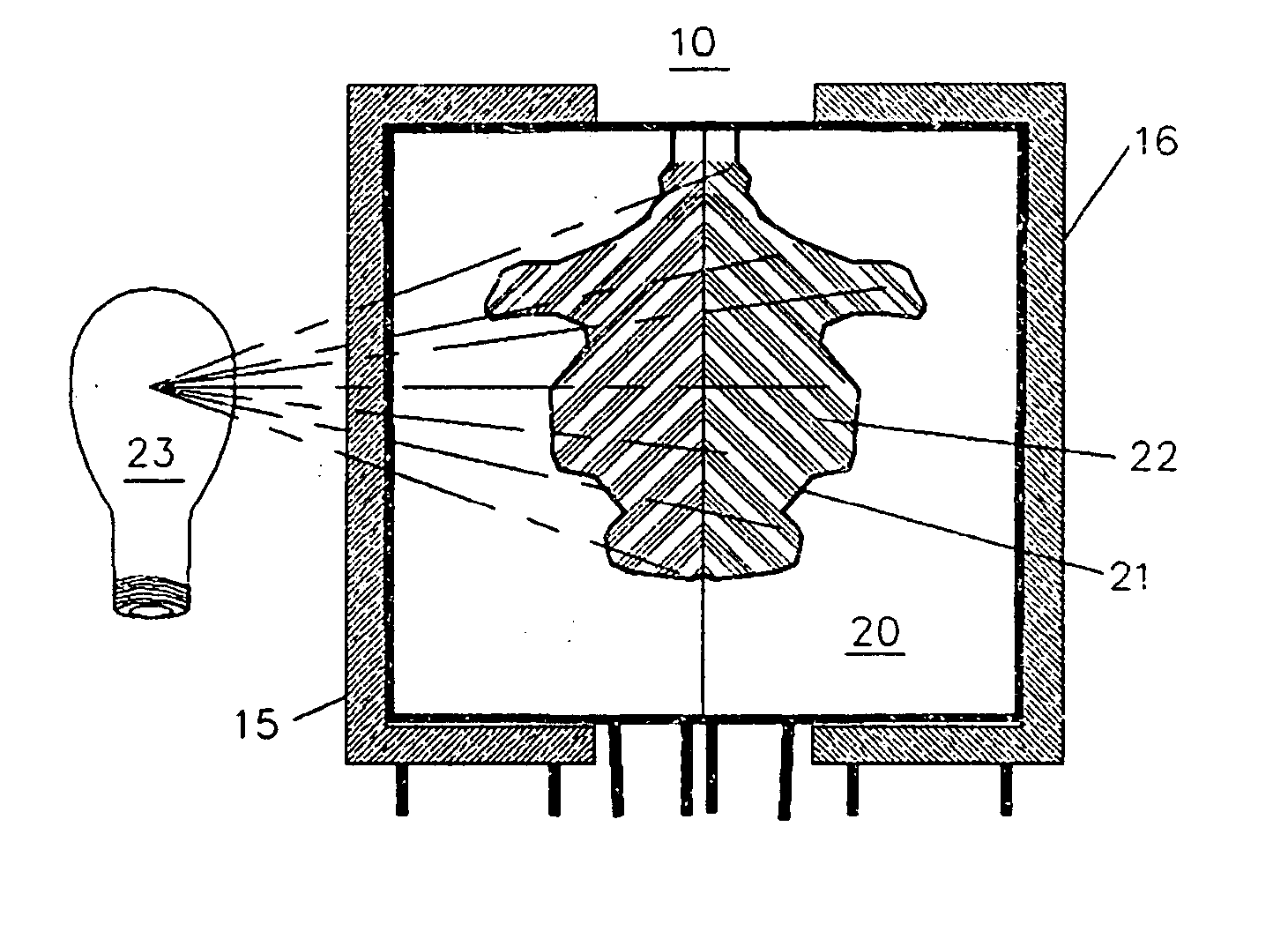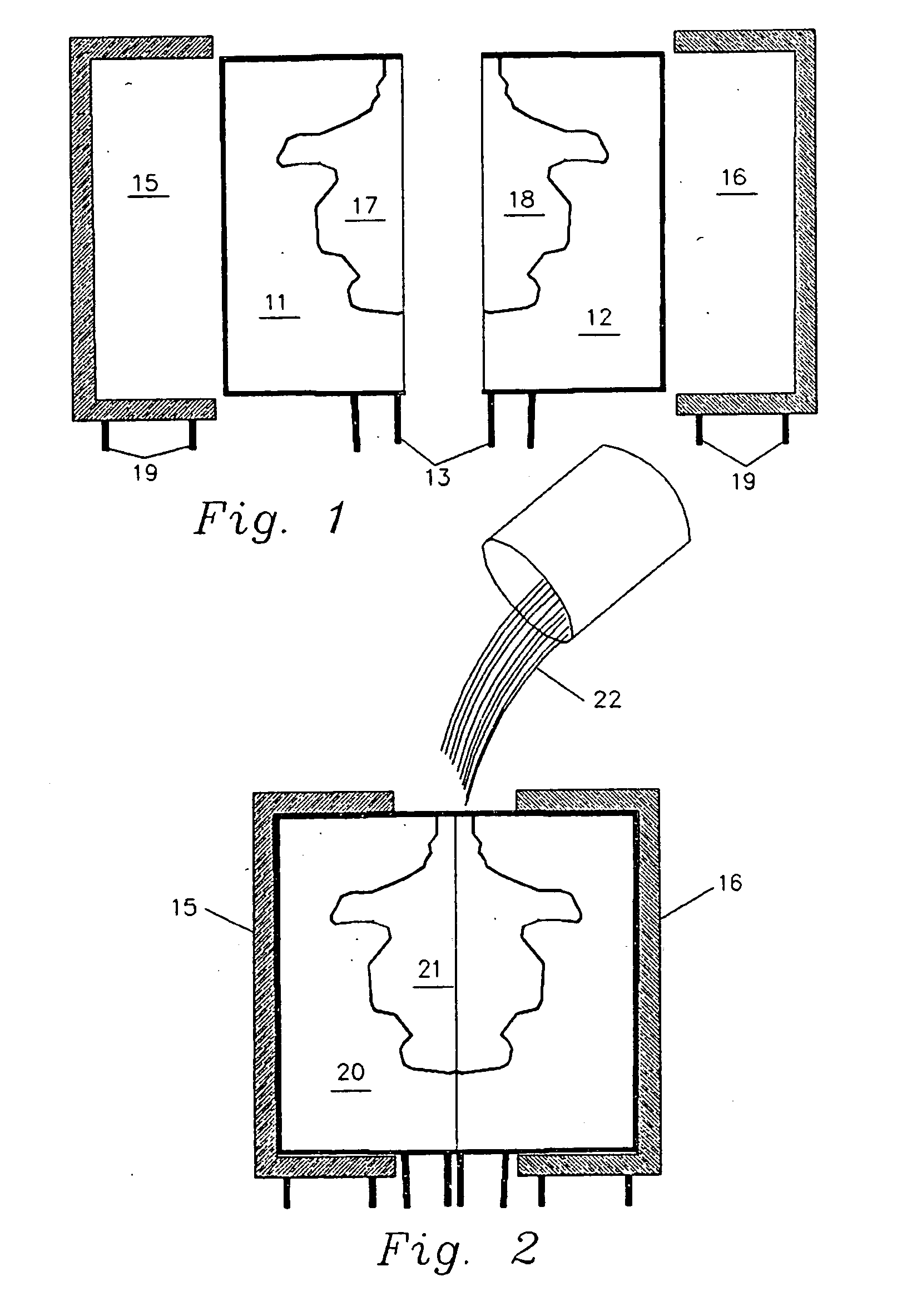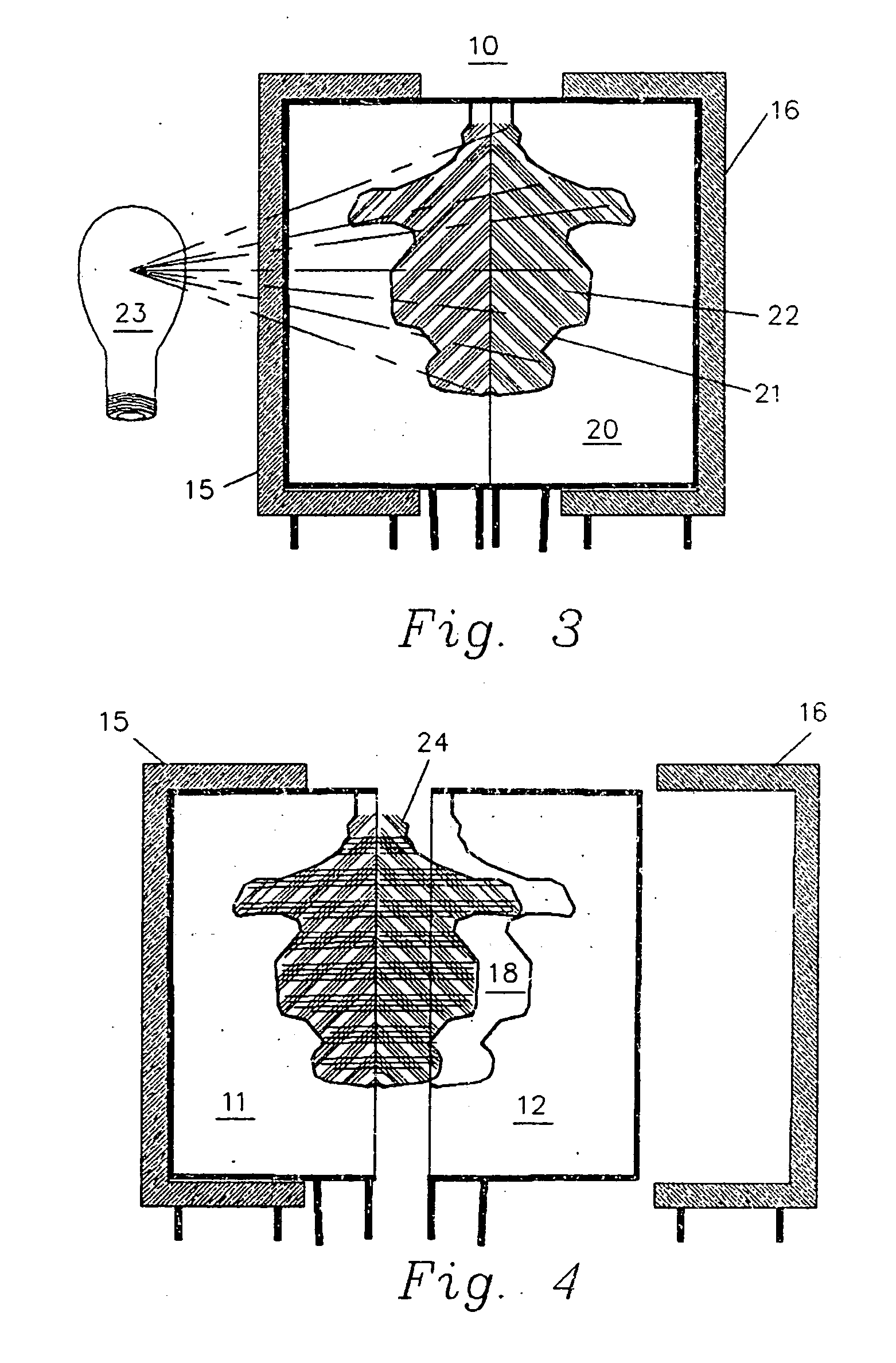Method and apparatus for creating sacrificial patterns and cast parts
a technology of applied in the field of methods and apparatus for creating sacrificial patterns and cast parts, can solve the problems of increasing the complexity and cost of the process, severe limitations on the structural integrity of the mold, and limiting the geometry of the end product, i.e. the casting, and achieve the effect of removing sticky oxide residu
- Summary
- Abstract
- Description
- Claims
- Application Information
AI Technical Summary
Benefits of technology
Problems solved by technology
Method used
Image
Examples
Embodiment Construction
[0038] Throughout the following description and claims, the terms “cure”, “cured”, “curing”, “solidified”, “solidifying”, “hardening” and “hardened” are used interchangeably to describe a transition of material from liquid to solid. The term “radiation” is used to identify the radiation which initiates the transition of material, polymerization, from a liquid to a solid which may be soft, flexible, hard, ridged or solid having enhanced properties, such as having qualities that enhance its use as a sacrificial model in a lost wax process. The frequency of polymerization initiating radiation is dependent on the photo initiator or initiators used in the casting compound. They may respond to radiation ranging from radio frequencies through microwave, infrared, the visible spectrum and ultraviolet. In the preferred embodiment, the polymerization initiating radiation is in the ultraviolet blacklight range, 352 nanometers, for one radiation step and in the ultraviolet bluelight range, 368 ...
PUM
| Property | Measurement | Unit |
|---|---|---|
| Nanoscale particle size | aaaaa | aaaaa |
| Nanoscale particle size | aaaaa | aaaaa |
| Pressure | aaaaa | aaaaa |
Abstract
Description
Claims
Application Information
 Login to View More
Login to View More - R&D
- Intellectual Property
- Life Sciences
- Materials
- Tech Scout
- Unparalleled Data Quality
- Higher Quality Content
- 60% Fewer Hallucinations
Browse by: Latest US Patents, China's latest patents, Technical Efficacy Thesaurus, Application Domain, Technology Topic, Popular Technical Reports.
© 2025 PatSnap. All rights reserved.Legal|Privacy policy|Modern Slavery Act Transparency Statement|Sitemap|About US| Contact US: help@patsnap.com



